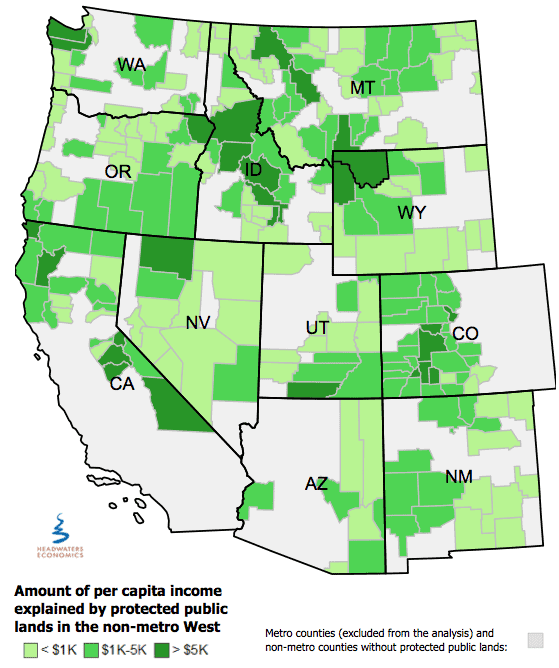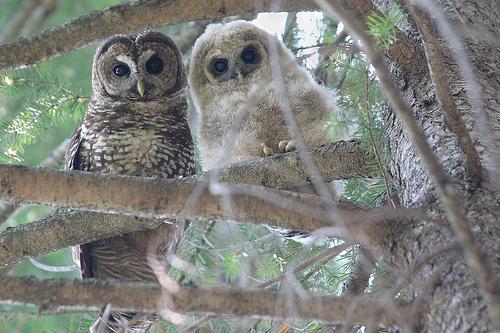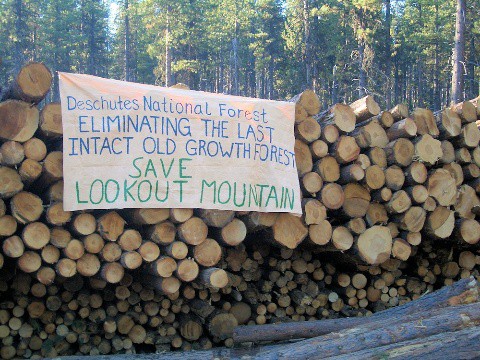
Let me illustrate with a current policy issue: “Should certain dams be removed to restore salmon runs?” Scientists can assess with some degree of confidence the likely effects of removing or maintaining a particular dam. Scientific information alone, however, is an insufficient justification for deciding to keep or remove a dam. There are biological consequences of dam removal (and maintenance), and those consequences may be substantial from a salmon perspective, but ecological consequences are but one of many elements that the public and decision-makers must weigh when making a policy choice.
Policymakers, not scientists, decide whether preserving salmon runs should trump flood protection, irrigated agriculture or electricity generation. As the public and decision-makers balance policy alternatives, what they need from scientists are facts and probabilities. What they do not need from scientists are their or their employer’s values and policy preferences masked within scientific information disguised as being policy neutral.
There are other common examples. In working with scientists, I often encounter value-laden terms like “degradation,” “improvement,” “good,” “poor,” “impact,” or “alien invasive.” Scientists should avoid these types of normative words in conveying scientific information. Such words imply a preferred ecological state, a desired condition, an accepted benchmark or a favored class of policy options. This is not science; it is a form of policy advocacy — subtle, sometimes unintentional, but it is patently stealth policy advocacy.
Consider the widespread use of concepts such as “ecosystem health.” It is normative science! “Ecosystem health” is a value-driven policy construct, but it is often passed off as science to unsuspecting policy-makers and the public. Think what the average person actually hears when scientific data or assessments are packaged or presented under the rubric of “ecosystem health.” Healthy is good. Any other state of the ecosystem must be unhealthy, hence, undesirable.
Scientific information must remain a cornerstone of public policy decisions, but I offer cautionary guidance to scientists: Get involved in policy deliberations, but play the appropriate role. Provide facts, probabilities and analysis, but avoid normative science. Scientists have much to offer the public and decision-makers but also have much to lose when they practice stealth policy advocacy.
I read all the comments carefully and found many worth quoting also, so here goes..
This from Bill West:
Lawyers refer to “combat science” and “dueling experts.” The most obvious context is litigation, but I also routinely see scientists employed or funded by public research or resource management institutions who are clearly working to advance an agenda. Sometimes it’s their institution’s or sponsor’s agenda, but all too often it’s a personal or ideological one that may even run counter to the institution’s publicly-stated policies and goals.
In my experience, including my time as a biologist working for governmental and university research organizations, “normative science” as the author describes it is the rule rather than the exception. I’m sorry, but having a point of view is an unavoidable attribute of human nature. I agree that scientists should strive for pure objectivity, but it’s unrealistic to expect them to achieve it. This is especially true when scientists’ work is intended to guide and support policy or resource management decisions, whether they’re getting their paycheck directly from an agency or from a university. When advising policy makers or the public I feel that it is better for such scientists to do their best to make the kinds of objective assessments that the author calls for, but then to explicitly point out where their assessments rely on assumptions or inferences rather than data, explain what those assumptions and inferences are and how they might influence the analysis and outcomes, and acknowledge their own predispositions and explain how their assumptions and inferences might align with their predispositions. After all, the scientist’s own point of view is an important piece of metadata that needs to be present in a comprehensive analysis.
Given our restoration discussions on this blog, I thought this was interesting by Jim Anderson…
Cheers to Bob Lackey for illuminating the fallacy of normative science. It permeates the vocabulary of science and goes to the very core beliefs of ecology and conservation biology. For example, the idea of “ecosystem restoration of the San Francisco Bay Delta habitat” is a stealth normative concept. What is the target period,1948 when the rivers were filled with gold mining sediment, or a time earlier when the delta was a series of lakes? Lauren Sommer in a recent NPR article asks this question http://www.npr.org/2012/10/07/162393931/restore-california-delta-to-what-exactly .
In a recent National Research Council committee http://www.nap.edu/catalog.php?record_id=13394 we debated the idea of restoration. Ecosystems cannot be restored. They are in constant evolution and the best that can be done is to anticipate the possible directions and steer the systems to one determined to be more favorable to society. In the very near future, the focus in many instances will not be on restoration but on adaptive triage. In fact, I suspect for the shores of New Jersey and Long Island that future is now.
This one by Paul Fishman
I’ve had a county commission tell me that, although my presentation was informative, well put together, and based on excellent data, they had to go with the “opinion” of the state fish agency because “they are the experts.” A lot of my career has been involved with natural resource permitting. I have developed a bad habit of reading journal articles and research reports that are cited by agency staff in their findings on a proposed project. All too often I find that the reports have been cherry picked to find information that supports the writer’s conclusion (i.e. policy decision), or that the cited source says nothing about the topic for which it has been cited. Very often this kind of normative science has a price tag; a recent client spent an extra $1M on a project because of an agency policy decision that was anything but science-based.
I have no idea how to get to complete objectivity in the use of science. I do like the suggestion by one commenter that we at least strive for transparency. For the examples I used above, at least an objective peer review of agency staff findings would go a long way.
From Ed Hanna:
Many of the norms for publishing scientific research already serve well to ensure self-regulation. As well, much can be learned from the rules imposed elsewhere; for example, rules for declaring a conflict of interest. Likewise rules for full disclosure. The problem is that these rules do not fully resolve the stealth component; largely due to the subtle and nuanced nature of stealth advocacy.
In my professional practice, I run up against this problem daily. I have developed a set of rules and procedures that I use to guide my work.
1. Use quantitative methods with full disclosure of all data, sources and uncertainties (error ranges)
2. Analyse a full range of alternatives for achieving a clearly stated desired outcome
3. Report results as medians and ranges using physical units of measure
4. Use economic methods to derive weights (i.e., preference values) for physical measures
5. Rank the alternatives based on their net contribution to the overall wellbeing of the community
6. Assess and report the distribution of costs, benefits and risks among major groups (stakeholders) within the community.There are some critical aspects to this set of rules. First, I disagree with Lee Foote when he states that “… scientists should be encouraged to speak out and give their considered professional opinion.” At no point is this process would I step forward and give my ” considered professional opinion”. My considered professional opinion is reflected in the analytical framework and the data sources on which I have chosen to rely … no more needs to be said. I am agnostic in terms of the actual results and have no considered professional opinion to add. I may have a personal opinion on what I would like to see happen but it would be patently unprofessional to offer this in my professional role.
Step 4 is critical and is one about which many natural scientists are unfamiliar and even worse, highly suspicious. Environmental and natural resource management decisions are social policy decisions. The overriding goal is to improve the collective wellbeing of the members of society. What is and is not an improvement in our collective wellbeing is a challenging question but a whole field of science is devoted to defining, measuring and forecasting societal wellbeing (i.e., economics and sociology). Certainly natural science has little to add. Within our society, there are diverse values and preferences; measuring and aggregating these values is complicated and imprecise … as also can be argued when it comes to the natural sciences. Nonetheless, it is our responsibility as scientists trying to inform decision-makers to make the best use of the best knowledge and information available. If this rule is followed when it comes to gauging the public’s values and preferences and we abide by the rules of transparency and replicability, we have performed our duties with integrity, even if the collective public preference deviates significantly from our own personal values.
Let me conclude with mention of Step 6. There is no scientific basis reach a conclusion on the issue of fairness. I can apply rigourous scientific theory and methods to inform decision makers as to the alternative that will yield the great improvement in our collective wellbeing. But that is not the final word. The distribution of benefits, costs and risks among different sectors of society ultimately is the source of much public discourse. The basic question is “Is the distribution fair?” Are the trade-offs between economic and environmental interests fair? Have the interests of future generations been given fair consideration? These are classic normative issues on which the sciences, natural or social, have to little to offer. These are issues at the heart of philosophy and religion. These are issues that should be resolved in a free and responsible democracy through public discourse and the political process. When scientists offer their “considered professional opinions” on such matters they not only bring science into disrupt, they undermine the fundamentals on which our society is based.
Well, I’ve run out of room and there are still thoughtful, well-written comments that could be quoted. I recommend you check them out for yourself and if you would like to discuss here, feel free.





